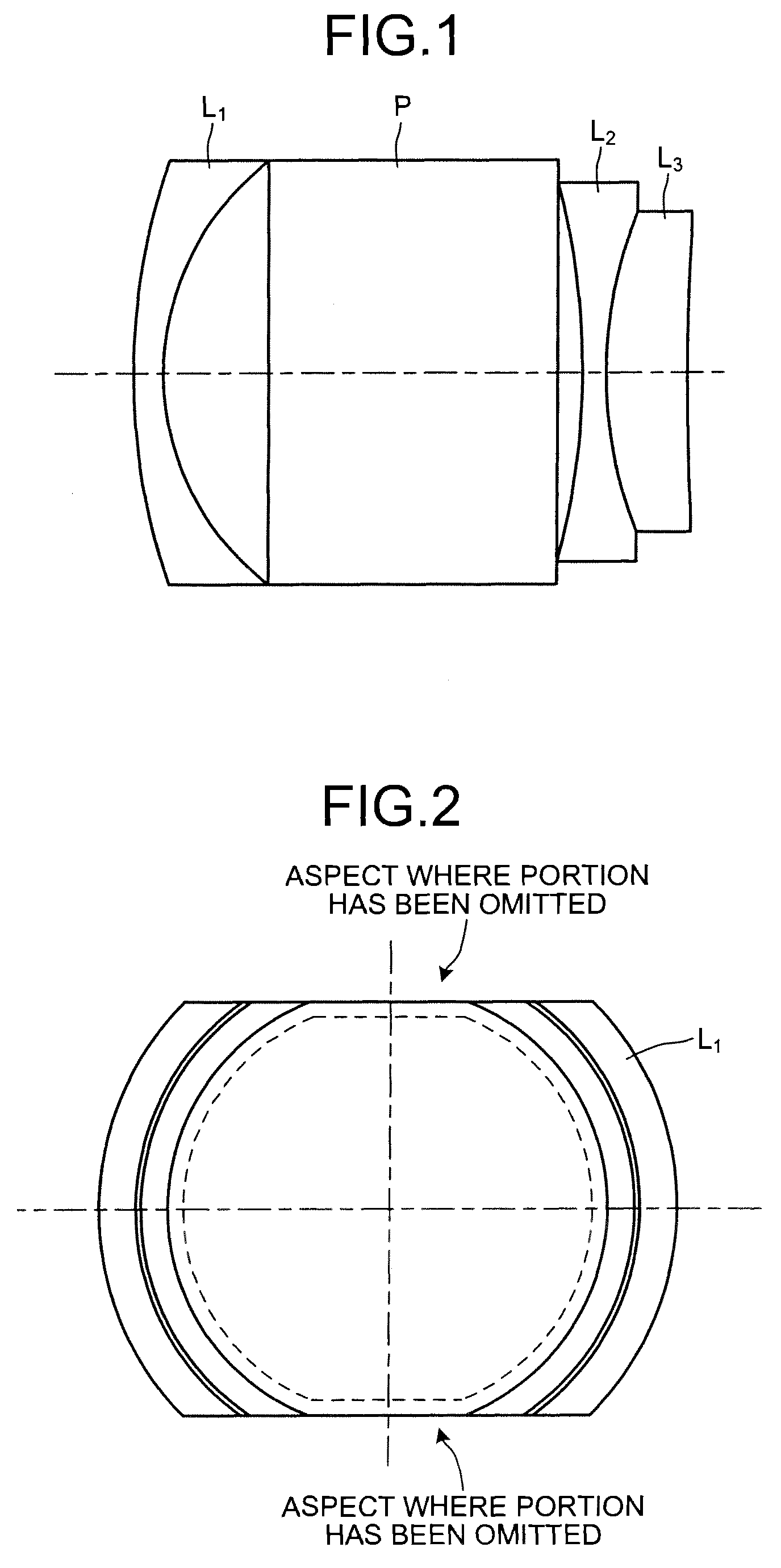Reflex, magnifying optical system
a technology of optical system and lens, applied in the field of reflex, can solve the problems of insufficient means for reducing error sensitivity, significant deterioration of optical performance, and high error sensitivity of lenses arranged on the incident side or on the emission side of prisms that refract the optical path
- Summary
- Abstract
- Description
- Claims
- Application Information
AI Technical Summary
Benefits of technology
Problems solved by technology
Method used
Image
Examples
first embodiment
[0049]FIG. 3 is a cross sectional view, along the optical axis, of a reflex, magnifying optical system according to a The reflex, magnifying optical system includes sequentially from the object side (object not depicted), a first lens group G11 having a negative refractive power, a second lens group G12 having a positive refractive power, a third lens group G13 having a negative refractive power, and a fourth lens group G14 having a positive refractive power. The reflex, magnifying optical system varies magnification by moving the second lens group G12 and the third lens group G13 along the optical axis. The first lens group G11 and the fourth lens group G14 are fixed at all times. A filter F including an IR (infrared) cut filter, a low-pass filter, a cover glass, etc. is arranged between the fourth lens group G14 and an image plane IMG. The filter F is provided as necessary and may be omitted if not necessary. A light receiving surface of an imaging device such as a charge-coupled...
second embodiment
[0150]FIG. 13 is a cross sectional view, along the optical axis, of a reflex, magnifying optical system according to a The reflex, magnifying optical system includes sequentially from the object side (object not depicted) a first lens group G21 having a negative refractive power, a second lens group G22 having a positive refractive power, a third lens group G23 having a negative refractive power, and a fourth lens group G24 having a positive refractive power. The reflex, magnifying optical system varies magnification by moving the second lens group G22 and the third lens group G23 along the optical axis. The first lens group G21 and the fourth lens group G24 are fixed at all times. A filter F including an IR cut filter, a low-pass filter, a cover glass, etc. is arranged between the fourth lens group G24 and an image plane IMG. The filter F is provided as necessary and may be omitted if not necessary. A light receiving surface of an imaging device such as a CCD and a CMOS is provide...
PUM
 Login to View More
Login to View More Abstract
Description
Claims
Application Information
 Login to View More
Login to View More - R&D
- Intellectual Property
- Life Sciences
- Materials
- Tech Scout
- Unparalleled Data Quality
- Higher Quality Content
- 60% Fewer Hallucinations
Browse by: Latest US Patents, China's latest patents, Technical Efficacy Thesaurus, Application Domain, Technology Topic, Popular Technical Reports.
© 2025 PatSnap. All rights reserved.Legal|Privacy policy|Modern Slavery Act Transparency Statement|Sitemap|About US| Contact US: help@patsnap.com



